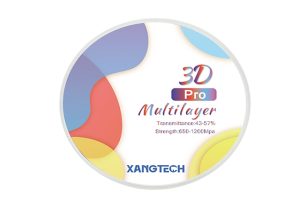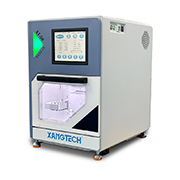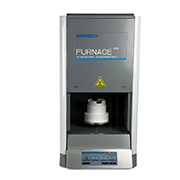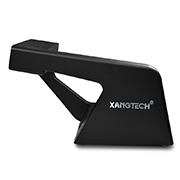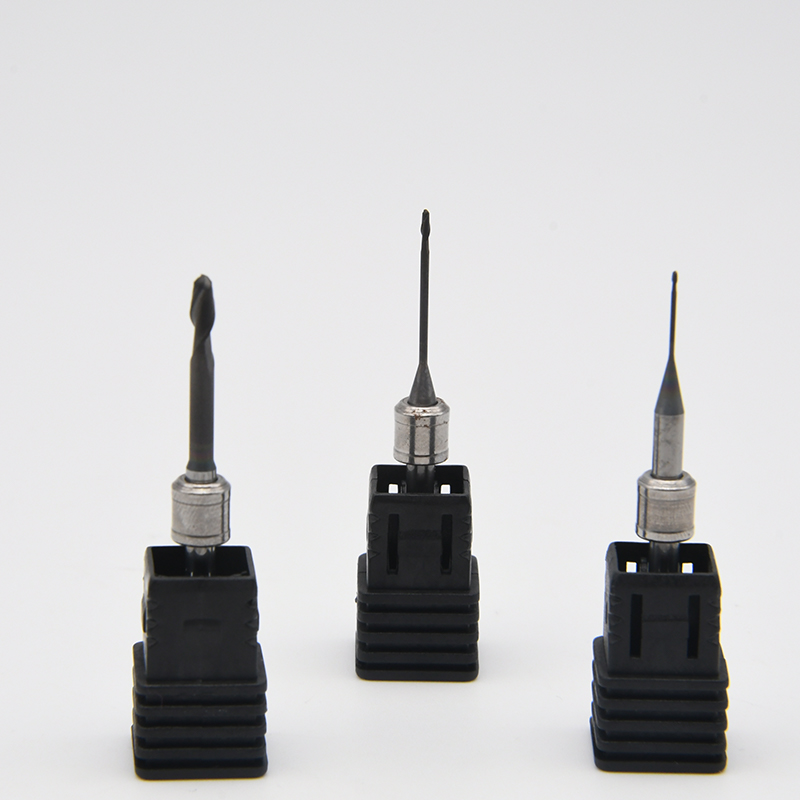Understanding CAD CAM Milling Burs
Introduction to CAD CAM Technology
Computer-Aided Design and Computer-Aided Manufacturing (CAD CAM) technology has transformed multiple sectors, especially the dental and industrial domains. This advanced technology integrates computerized planning with automated tool production, facilitating a level of precision and efficiency unattainable by manual methods. Within the dental field, CAD CAM systems are employed to produce dental restorations like crowns, bridges, and implants with remarkable accuracy.
Importance of Choosing the Right CAD CAM Milling Bur
When working with CAD CAM systems, the choice of the CAD CAM milling bur is of paramount importance. The material and design of the milling bur significantly impact the quality, precision, and durability of the final product. Choosing the right milling bur ensures optimal performance, reduces production time, and prolongs the lifespan of both the tool and the machine. This selection becomes even more crucial when dealing with diverse materials like zirconia, ceramics, and various metals.
Types of Materials Used in CAD CAM Milling Burs
Carbide Milling Burs
Characteristics of Carbide
Carbide milling burs are widely recognized for their strength and durability. Composed of a combination of carbon and tungsten, these burs are exceptionally hard and wear-resistant. They can withstand high-speed operations and maintain their sharpness for extended periods, making them a reliable choice for both dental and industrial applications.
Applications in Dental and Industrial Fields
In the dental field, carbide milling burs are commonly used for procedures that require high precision, such as the creation of dental crowns and bridges. They are also adept at cutting through tough materials without losing their edge. In industrial settings, these burs are versatile and can be used for milling, drilling, and engraving various metals and hard plastics.
Diamond-Coated Milling Burs
Advantages of Diamond Coating

Milling burs with a diamond coating present distinct advantages owing to the diamond particles on their exterior. This specialized coating improves the bur’s cutting performance, delivering an exceptionally fine finish and boosting its resistance to wear and heat. The robustness of diamond-coated burs guarantees they retain their cutting efficiency over prolonged use.
Suitability for Different Types of Workpieces
These burs are particularly suitable for working with hard and brittle materials, including ceramics and composites. In the dental sector, diamond-coated milling burs are ideal for achieving smooth finishes on crowns and bridges. They are also used to mill materials that require precision at a microscopic level, ensuring high-quality results for intricate designs.
Zirconia Milling Burs
Properties of Zirconia as a Material
Zirconia is renowned for its robustness and biocompatibility, making it an excellent material for dental applications. CAD CAM milling burs made from zirconia offer exceptional strength and are resistant to chipping and breaking. This material can withstand high levels of mechanical stress while maintaining its integrity.
Utilization in Precise and Durable Components
Zirconia milling burs find extensive use in creating dental restorations that require precision and longevity. They are particularly effective for fabricating full-contour zirconia crowns and bridges.Like some companies utilize zirconia for producing various dental components, working through several stages like scanning, designing, milling, and polishing to achieve optimal results. The preshaded zirconia blocks from Dentalxangtech are a testament to the material’s versatility and effectiveness in producing durable dental prostheses.
Ceramic Milling Burs
Benefits of Using Ceramic Materials
Ceramic milling burs represent a crucial segment in the CAD CAM milling bur spectrum. These burs are highly regarded for their capacity to deliver a smooth, polished finish on various workpieces. Ceramic materials are inherently hard and wear-resistant, which aids in maintaining the sharpness of the burs over extended use. Furthermore, they produce less heat during milling operations, which is beneficial for preserving the integrity of delicate materials.
Common Usage Scenarios and Limitations
In the dental industry, ceramic milling burs are frequently used for applications that require a high degree of aesthetic quality, such as the fabrication of dental veneers and prosthetics. Their ability to produce detailed, polished surfaces makes them ideal for intricate work. However, they are not suited for extremely hard materials, which can cause them to wear down more quickly compared to carbide or diamond-coated options. Despite this limitation, ceramic milling burs remain a preferred choice for specific tasks requiring finesse and a fine finish.
In conclusion, understanding the different materials used in CAD CAM milling burs and their respective applications can significantly enhance the efficiency and quality of your work. By carefully selecting the appropriate milling bur, whether it be carbide, diamond-coated, zirconia, or ceramic, professionals in both dental and industrial fields can achieve superior results tailored to their specific needs. For further insights into advanced materials and tools, you may refer to the product range at companies like DentalXANGTECH, which offers a variety of innovative solutions for modern manufacturing challenges.
Comparisons of Material Options
Durability and Longevity Analysis
Choosing the right CAD CAM milling bur is pivotal for ensuring longevity and durability, which varies significantly with the material used. For instance, carbide burs offer formidable strength and prolonged wear resistance, making them ideal for high-intensity tasks. Diamond-coated milling burs, on the other hand, have a higher durability due to their enhanced resistance to wear and tear, extending their effective lifespan even under demanding conditions. Additionally, from the perspective of reducing wear on burs, the option of prosthesis’ materials is also particularly essential. For example, lithium disilicate is highly conducive to milling, and minimize the procedural time required and enhance workflow efficiency within the lab.

Lifespan of Different Materials in Various Conditions
Carbide burs are highly effective in settings demanding precision and are more resistant to chipping, ensuring a longer lifespan even under tough conditions. On the other hand, ceramic burs usually have a shorter lifespan when used on extremely hard materials but excel when working with softer substrates. Zirconia milling burs are notable for their durability under significant mechanical stress, maintaining their integrity for extended periods. Diamond-coated burs offer exceptional longevity, particularly when milling ultra-hard or abrasive materials.
Performance Efficiency
Performance efficiency is another crucial factor when selecting a CAD CAM milling bur. The material composition of the bur directly influences grinding speed, accuracy, and the quality of the finished product. Carbide burs offer rapid cutting speeds and maintain precision over extended operations, making them suitable for tasks requiring consistent accuracy. Diamond-coated burs ensure a smoother finish and retain their sharpness, thereby enhancing efficiency.
Grinding Speed and Accuracy Comparisons
The grinding speed of carbide milling burs is excellent, facilitating quick material removal while ensuring consistent precision. Diamond-coated milling burs, however, shine in achieving superior surface finishes by reducing friction and heat generation during milling. Zirconia milling burs balance speed and precision, particularly in dental applications where accuracy is paramount. Ceramic milling burs offer high precision in producing detailed finishes, albeit at a slower speed compared to their carbide and diamond-coated counterparts.
Cost-Effectiveness Evaluation
Evaluating cost-effectiveness entails considering both the initial investment and the long-term benefits offered by different CAD CAM milling bur materials. Carbide burs generally require a moderate initial investment but offer significant long-term savings due to their durability and low replacement frequency. Diamond-coated burs have a higher initial cost but yield long-term benefits through extended tool life and reduced downtime.
Initial Investment vs. Long-Term Benefits
The initial outlay for carbide burs is balanced by their long-lasting nature and adaptability in various tasks, making them an economically viable choice overall. Although diamond-coated milling burs come with a higher initial expense, they offer substantial long-term advantages by retaining their effectiveness over extended periods of use, thereby lowering replacement expenses. Zirconia burs, despite having a moderate initial price, yield considerable savings over time due to their durability and strong performance. Ceramic burs, while potentially necessitating more frequent replacements, deliver cost efficiencies in applications that demand high-quality finishes and precision.
Factors to Consider When Selecting CAD CAM Milling Burs
Type of Workpiece Material
The type of workpiece material significantly influences the choice of a CAD CAM milling bur. Different materials require burs with specific properties to achieve optimal milling results. For instance, hard materials like metals and ceramics necessitate burs with high durability and cutting efficiency, such as carbide or diamond-coated types.
Compatibility with Different Substrates
Carbide milling burs are highly compatible with a variety of substrates, including hard plastics and metals, ensuring versatile application. For milling hard and brittle materials, such as ceramics and composites, diamond-coated burs are particularly suitable due to their enhanced cutting capabilities. Zirconia milling bur, known for their strength, are best utilized in milling processes involving robust substrates like dental prostheses. Ceramic milling burs are ideal for softer materials like dental veneers, where a polished finish is paramount.

Desired Finish Quality
When selecting a CAD CAM milling bur, the desired finish quality of the end product plays a critical role. Different materials impart varying levels of smoothness and detail to the milled workpiece. For projects requiring ultra-smooth, high-precision finishes, diamond-coated and ceramic burs are often preferred.
Influence on Surface Smoothness and Precision
Diamond-coated milling burs are known for their ability to produce exceptionally smooth surfaces, thanks to their fine cutting edges and reduced friction. Ceramic burs also play a significant role in achieving high-quality finishes, making them particularly suitable for aesthetic applications within the dental industry. Carbide milling burs strike a balance in providing a precise and smooth finish, making them ideal for scenarios where both precision and surface smoothness are required, albeit not as fine as diamond-coated or ceramic alternatives. Zirconia milling burs are essential for ensuring precise and durable finishes, especially when manufacturing dental crowns and bridges.
Machine Compatibility
Ensuring machine compatibility is crucial when selecting a CAD CAM milling bur. The bur must fit properly and function seamlessly with the CAD CAM equipment to achieve optimal results. Mismatched tools can lead to inefficient milling and potential damage to both the bur and the machine.
Ensuring Proper Fitting and Functionality with Equipment
Proper fitting of the milling bur is essential for maintaining the integrity of the milling process. Carbide and diamond-coated burs are designed to be compatible with a wide range of industrial and dental CAD CAM machines, ensuring versatile application. Zirconia burs must be fitted correctly to withstand the mechanical stress during milling, ensuring reliable performance. Ceramic burs, suitable for more delicate machining, must be matched precisely with compatible equipment to prevent wear and tear and ensure high-quality milling results.
In conclusion, the selection of the appropriate CAD CAM milling bur is pivotal for achieving high-quality results efficiently. By understanding the different material options—carbide, diamond-coated, zirconia, and ceramic—professionals can make informed decisions that enhance the longevity, performance efficiency, and cost-effectiveness of their milling operations. Companies like Dentalxangtech offer a comprehensive range of advanced milling solutions tailored to meet modern manufacturing challenges.
Industry Trends and Innovations in CAD CAM Milling Bur Materials
Emerging Material Technologies
In the constantly advancing realm of CAD CAM milling bur technology, keeping up with new material technologies is essential for maintaining a competitive edge and ensuring superior results. Recent developments have led to the creation of CAD CAM milling burs made from hybrid metals and alloys. These materials merge the benefits of various metals to improve the milling process. Hybrid metals integrate characteristics like hardness, durability, and wear-resistance, offering an advantage for milling intricate and challenging workpieces. The adoption of such advanced materials in milling burs enhances precision and efficiency, fostering innovation and excellence in both dental and industrial applications.
Introduction of Hybrid Metals and Alloys
Hybrid metals and alloys represent a leap forward in CAD CAM milling bur technology. These materials often integrate the toughness of tungsten with the resilience of cobalt and the flexibility of nickel, resulting in burs that are remarkably versatile and robust. Such combinations help burs withstand the high stresses encountered in intensive milling tasks. Dental professionals benefit particularly from these innovations, achieving smoother finishes and longer-lasting restorations with fewer replacements and reduced downtimes. The deployment of hybrid metals and alloys enriches the range of options available to professionals, enhancing the precision and quality of their output.
Advanced Coating Techniques
The field of CAD CAM milling burs has also seen significant advancements in coating technologies, which play a pivotal role in the performance and longevity of these tools. Coating methods like nanocoatings have gained traction due to their ability to enhance the durability and cutting efficiency of milling burs. These advanced coatings reduce friction and heat generation during milling, thus preserving the sharpness of burs and minimizing wear.
Overview of Nanocoatings and Enhanced Durability Solutions

Nanocoatings involve applying a thin, uniform layer of nanoscale particles onto the surface of CAD CAM milling burs. This innovative technique enhances the hardness and abrasion resistance of the burs, ensuring they remain sharp and effective over extended periods. One of the key benefits of nanocoatings is their ability to provide smoother and cleaner cuts by reducing tool wear and tear. Additionally, these coatings contribute to the overall efficiency of the milling process by minimizing heat build-up, which can otherwise compromise the integrity of the material being milled. Tools featuring nanocoatings perform exceptionally well in precision-demanding tasks, making them invaluable assets in both dental and industrial settings.
Insights from XANGTECH Biotechnology Co., Ltd.
Overview of XANGTECH’s Contributions to the Field
XANGTECH Biotechnology Co., Ltd. has established itself as a pioneer in the creation and production of cutting-edge CAD CAM milling bur solutions. Dedicated to innovation and excellence, the company has made continuous and notable advancements in the industry, as highlighted in their company profile. Their proficiency covers multiple areas, including dental and industrial applications, where accuracy and longevity are crucial.
Company Profile Highlights
At the core of XANGTECH’s success lies a relentless focus on research and development. The company boasts a team of experts dedicated to pushing the boundaries of what’s possible in CAD CAM milling bur technology. Their state-of-the-art manufacturing facilities enable the production of high-quality milling burs tailored to meet the specific needs of their clientele. The company’s strategic investments in cutting-edge technology and materials science underpin their capability to deliver innovative solutions that enhance performance and efficiency.
Notable Products and Material Innovations
XANGTECH Biotechnology Co., Ltd. stands out for its remarkable product line that embodies cutting-edge material innovations in CAD CAM milling bur technology. Their extensive range of products caters to diverse applications, from 3D Multilayer Zirconia Block to XT50 Milling Machine, ensuring that each milling task is executed with exceptional precision and quality. You can explore their offerings extensively on their product page.
Innovative Use of Advanced Materials
XANGTECH’s products feature an innovative use of advanced materials, including carbide, diamond-coated, zirconia, and ceramic. The company has pioneered the utilization of these materials to create milling burs that combine strength, durability, and precision. For instance, their zirconia milling burs are designed to deliver superior performance in dental restorations, ensuring longevity and precision in outcomes. Moreover, advanced coating techniques employed in their diamond-coated burs significantly enhance the tools’ lifespan, allowing for efficient and consistent milling of hard materials.

Pioneering Coating Technologies
One of the significant advancements achieved by XANGTECH is in the use of innovative coating technologies. By integrating nanocoatings and other solutions that enhance durability, the company has created milling burs that retain their cutting efficiency for longer periods. This progress not only minimizes the need for frequent tool replacements but also ensures that professionals can depend on these tools for precision tasks. The careful application of these coatings highlights XANGTECH’s dedication to providing tools that fulfill the stringent requirements of contemporary milling applications.

